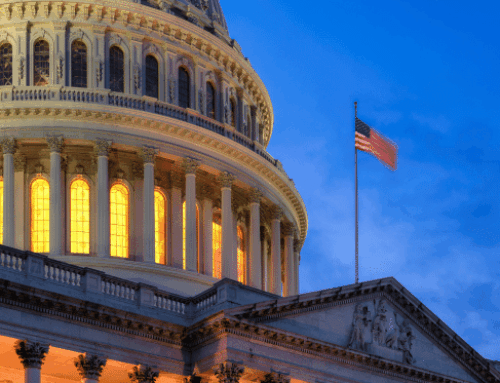A year ago today, on October 29, 2012, the country watched Superstorm Sandy roll onto the shores of New York and New Jersey, killing nearly 200 people and damaging and destroying homes, businesses and communities in its path. Even before the storm, the Federal Emergency Management Agency and other state and local officials prepared to respond to the storm and make sure that to the extent possible, aid reached the communities hardest hit.
Three months later, Congress passed H.R. 152, a $60 billion supplemental appropriations bill to meet the rebuilding needs of the communities damaged, with $50.3 million dedicated to rebuilding efforts and the remaining $9.7 billion to cover flood insurance claims. A year later, the vast majority of the money has been neither committed nor spent. In fact, only 23 percent has been obligated and 11 percent actually spent.
While we never advocate speed in spending just for the sake of it – we don't want the money wasted – the pace of obligating and spending is troubling, both because the communities rebuilding from the storm may not be getting the assistance promised and because of the systemic problems the pace of spending suggests.
At the time the Sandy supplemental bill passed, we were critical for a variety of specific reasons – even though Sandy made landfall in the Northeast, the bill included spending for 47 of the 50 states, and billions of dollars were allocated to projects that were clearly not Sandy-related or could and should have been funded through a regular appropriations cycle.
Too often, emergency spending bills are treated as free money by agencies or lawmakers looking to fund projects outside the normal budget process, avoiding scrutiny and rules requiring offsetting cuts or revenue elsewhere in the budget. The Sandy supplemental was no exception. $1 million for the DEA to repair or replace 15 vehicles as well as some technology, even though the Department of Justice, of which the DEA is a part, has more than 40,000 other vehicles. $5.37 million for the Army to repair damaged facilities — an increase to the Army's operations and maintenance budget that represents 0.01 percent. The Army has so much cash it could find $5.37 million by rummaging through couch cushions rather than asking for emergency spending.
And increasing spending to avoid scrutiny happened too. The president requested $32 million to repair Amtrak facilities damaged by Sandy. Congress appropriated $118 million, the bulk to accelerate long-planned upgrade and expansion projects unrelated to Sandy. The Highway Administration was given $2 billion to spend on roads outside of Sandy states.
Other elements of H.R. 152 pointed to the more systemic problems with the way we respond to disasters. Hurricanes, earthquakes, fires, floods and tornadoes are acts of nature we know will continue to happen. But our disaster response as a country does not reward the kind of planning that can reduce, or even at times prevent, the kind of property and community disruption that storms and other natural events cause.
For example, H.R. 152 allocated $5 billion to the Army Corps of Engineers, essentially doubling its normal budget, and included provisions which would eliminate the state and local cost share (usually 35 percent) for beach replenishment projects – essentially dredging sand from the ocean floor and building out beaches and man-made dunes. Many folks have been pointing to anecdotal evidence to sell these beach nourishment projects as a one-size-fits-all approach to future flood protection.
A smarter way to spend some of that money would be to buy out property owners and help people move to safer ground. And in places where we aren't going to do buyouts, the rebuilding must be done in a way that makes the communities more resilient, with high risk properties being removed, structures storm-proofed or elevated and flood and storm protection adapted to the natural condition. Pumping sand on beaches, to have the waves come and pull the sand back into the ocean, is a temporary and costly stop-gap that often leads to increased development and keeps people in harm's way. It's certainly not a solution for the whole East Coast.
Other elements of the bill point to the danger of disaster spending in an era where there is both immense pressure to appear fiscally responsible and immense pressure to direct resources to communities in need. The $16 billion for the Department of Housing and Urban Development's Community Development Fund is more than the usual annual sum budgeted for the program nationally and funds projects in any of 47 states where there was a declared disaster in 2011, 2012 and 2013. The projects that are funded through the Sandy funding stream may be excellent investments or they may be questionable, but it is hard to argue that they are emergency projects in response to Sandy, especially if they're in response to something that happened in 2011 on the other side of the country.
And of course, the slow pace of spending also raises the troubling specter that communities trying to respond to urgent needs – including planning and preparing for the next disaster – may not be getting the funding they need in a timely way. Unfortunately, it is incredibly difficult for the public to see where the Sandy recovery money has gone and where it hasn't.
Congress paid lip service to ensuring transparency and accountability by tasking the Recovery Act Transparency Board with tracking the money. You may remember the RAT Board from the stimulus; it was very effective at ensuring not only that stimulus spending was transparent but also in preventing abuse and fraud. But the board had teeth in the stimulus. Congress defanged it in H.R. 152 by taking away the power to compel agencies to disclose their spending. As a result, agencies don't even have to tag spending as Sandy-related. What spending data that is available is scattered across different websites and offices in different formats. This is no way to build public trust in an important process.
One final note about our nation's flawed policy response to disasters. At the beginning of this post, I mentioned that $9.7 billion of funds appropriated in H.R. 152 were allocated to flood insurance claims. The National Flood Insurance program was already $18 billion in debt to the Treasury when Sandy hit. Now that debt is more than $26 billion, at least $6 billion of which is from Sandy. But we were at least hopeful that the program was headed in the right direction because of reforms enacted a few months before Sandy hit.
The reforms passed in the Biggert-Waters Flood Insurance Reform Act moved the flood insurance program towards solvency, and slowly shifted risk from taxpayers to property owners in the flood plain. But, in the wake of a near default on our national debt, lawmakers are looking for ways to undo what they did just last year, delaying implementation of risk based rates, maintaining subsidies and keeping the risk squarely on the taxpayers' backs.
Policymakers need to use the one-year anniversary of Superstorm Sandy's landfall to reorient the myopic and balkanized government approach to disaster prevention, mitigation and response. Taxpayers deserve better policy solutions for more inter-agency coordination and better preparation for and response to disaster, and stronger infrastructure investment to prevent disaster and increase resiliency. We shouldn't have to wait until another disaster to get it right.








